The Most Complete Strategy for Prevention and Control of Common Concrete Quality Problems in History, Must See!! (Reprint)
Honeycomb
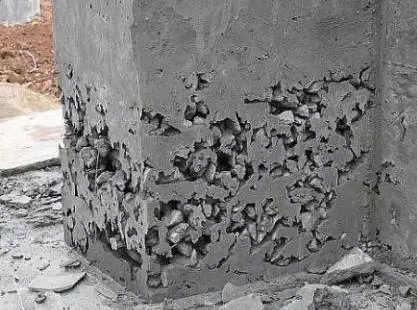
Common Problems
(1) Inaccurate mix proportion measurement and poor grading of sand and gravel;
(2) Nonuniform mixing;
(3) Formwork leakage;
(4) Insufficient or missing vibration;
(5) The concrete poured and vibrated at one time is too thick, the layering is not clear, the concrete handover is not clear, and the vibration quality cannot be mastered;
(6) The free fall height exceeds the regulations, concrete segregation and stone piling;
(7) The vibrator is damaged, or the power is cut off during supervision, resulting in missing vibration;
(8) The vibration time is insufficient and the bubbles are not eliminated.
Prevention and Control Measures
➤ Strictly control the mix proportion, measure strictly and check frequently;
➤ Concrete mixing shall be sufficient and uniform;
➤ If the blanking height exceeds 2m, a tumbling barrel or chute shall be used;
➤ Blanking and tamping in layers to prevent vibration leakage;
➤ Block the formwork gap, and check and correct the slurry leakage at any time during pouring;
Treatment Measures
① For small honeycombs, after cleaning, 1:2 cement mortar shall be troweled and compacted;
② Large honeycomb, chisel away weak loose particles, erect formwork after cleaning, and carefully fill and tamp with fine aggregate concrete of higher strength grade;
③ The deep honeycomb can be embedded with grouting pipe and exhaust pipe, and the surface can be plastered with mortar or poured with concrete for sealing before cement grouting treatment.
Pockmarked Surface
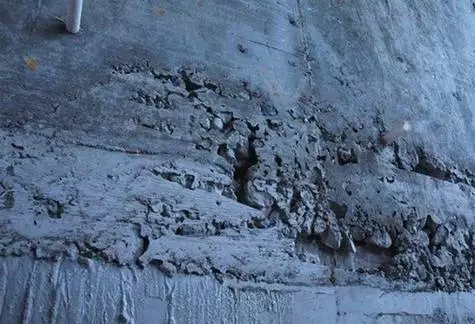
Common Problems
(1) The formwork is not cleaned, or the formwork is removed too early, and the formwork is adhered;
(2) Nonuniform or missing brushing of release agent;
(3) The wooden formwork is not watered and wet, and the concrete surface is dehydrated and powdered;
(4) The pouring time is too long, too much ash hanging on the formwork is not cleaned in time, resulting in the surface layer is not dense;
(5) The vibration time is insufficient and the bubbles are not eliminated.
Prevention and Control Measures
➤ The formwork shall be cleaned, the wooden formwork shall be fully wetted before concrete pouring, and the steel formwork shall be uniformly coated with isolating agent;
➤ Block the slab joints tightly and deal with the slurry leakage at any time during pouring;
➤ The vibration shall be fully compacted.
Treatment Measures
If the surface is painted, it may not be treated. If the surface is not painted, it shall be troweled and polished with cement mortar after the pitted part is fully wetted.
Hole
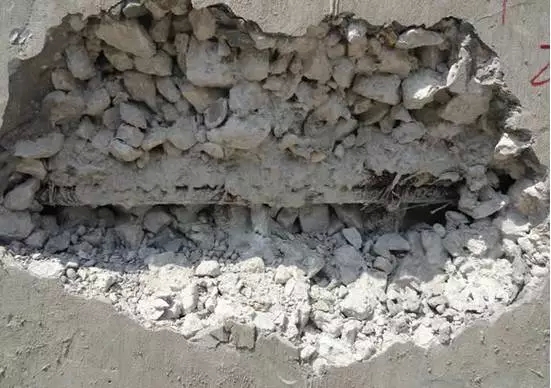
Common Problems
(1) The same reasons as honeycomb;
(2) The reinforcement is too dense and the concrete aggregate is too coarse, so it is not easy to ash and vibrate;
(3) There is no exhaust port for the formwork at the opening and pit bottom, and there are air bags in the concrete.
Prevention and Control Measures
➤ Fine aggregate concrete with higher strength grade shall be used at the place with dense reinforcement, which shall be tamped carefully in layers or manually inserted;
➤ Where there are reserved holes, materials shall be cut from both sides at the same time and vibrated carefully;
➤ Timely remove sundries falling into the concrete.
Treatment Measures
Remove the loose concrete around the hole, wash it with high-pressure water, and carefully pour and tamp it with fine aggregate concrete of higher strength grade after formwork erection.
Exposed Reinforcements
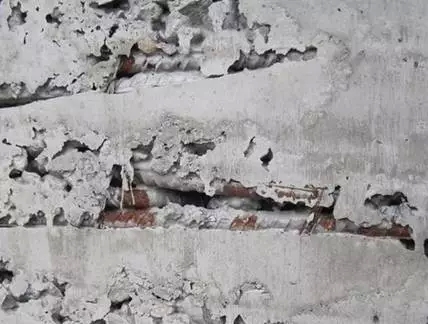
Common Problems
(1) The same reasons as "honeycomb"
(2) The reinforcement framework is not processed properly, and the formwork is pasted on the top;
(3) Lack of protective layer cushion block;
(4) The reinforcement is too dense;
(5) No reinforcement positioning measures, reinforcement displacement and formwork sticking.
Prevention and Control Measures
➤ Before pouring concrete, check that the position of reinforcement and protective layer cushion block is correct, and the wooden formwork shall be fully wet;
➤ When the reinforcement is dense, the coarse aggregate shall be stone with appropriate particle size;
➤ Ensure that the concrete mix proportion and workability meet the design requirements.
Treatment Measures
The exposed reinforcement on the surface can be cleaned and then plastered with 1:2 cement mortar on the surface. If the exposed reinforcement is deep, the interface shall be treated and then filled and compacted with high-grade fine aggregate concrete.
Missing Edges and Corners
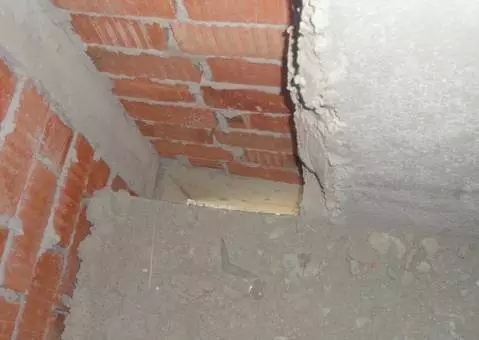
Common Problems
(1) The formwork design does not consider the factors to prevent formwork removal and corner falling;
(2) The wooden formwork is not wetted in advance, and the expansion of the wooden formwork after pouring causes the tensile crack of the concrete angle;
(3) The formwork joint is not tight and mortar leakage;
(4) The formwork is not painted with isolating agent or poorly painted, resulting in formwork removal adhesion;
(5) Formwork removal is too early and too fierce, and the formwork removal method and procedure are improper;
(6) Poor curing.
Prevention and Control Measures
➤ before pouring concrete, the formwork shall be fully wetted or painted with isolating agent;
➤ do a good job in concrete curing according to regulations;
➤ remove the formwork according to the specified time and protect the finished products.
Portal Deformation
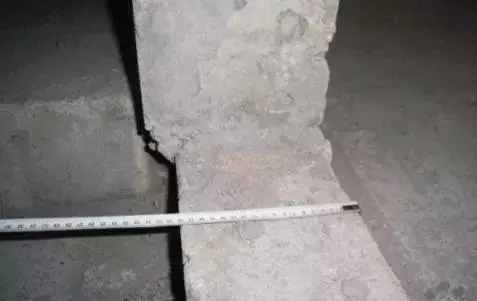
Common Problems
(1) The spacing between the top supports in the formwork is too large and the section is too small;
(2) There is no inclined top support in the formwork, and the stiffness is insufficient, so it cannot be kept square;
(3) The asymmetric pouring of concrete will squeeze the formwork;
(4) The opening formwork and the main formwork are not fixed well, resulting in relative movement.
Staggered Platform
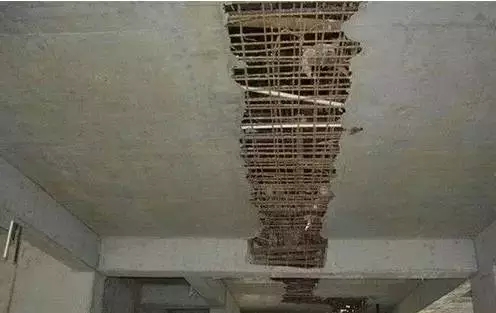
Common Problems
(1) Setting out error is too large;
(2) The formwork is displaced and deformed, and no alignment measures are taken during formwork erection;
(3) The top of the lower formwork is inclined or expanded, and the upper formwork is corrected and reset to form a staggered platform.
Slab Joint Concrete Pouring Is Not Solid
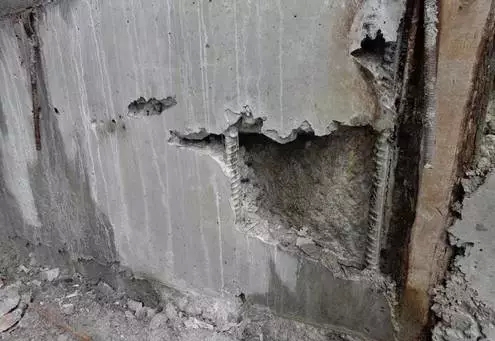
Common Problems
(1) The slab joint is too small and the stone is too large;
(2) The joint formwork is not firmly supported, deformed and leaked;
(3) Sundries in the seam are not cleared, or pipes are laid in the seam;
(4) No small vibrator is inserted or not vibrated or vibrated poorly.
Rotten Root
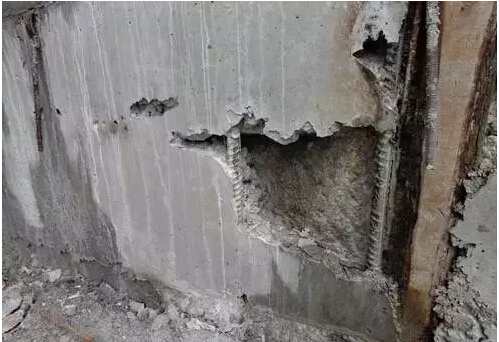
Common Problems
(1) The gap at the root of the formwork is not tightly blocked and slurry leakage occurs;
(2) Stone free mortar without the same mix proportion of concrete before pouring;
(3) The workability of concrete is poor, the water cement ratio is too large, and the stones sink to the bottom;
(4) The pouring height is too high, the concrete is concentrated in one place, the concrete is separated or the stones are piled up;
(5) The vibration is not solid;
(6) Unclean cleaning in the mold.
Crack
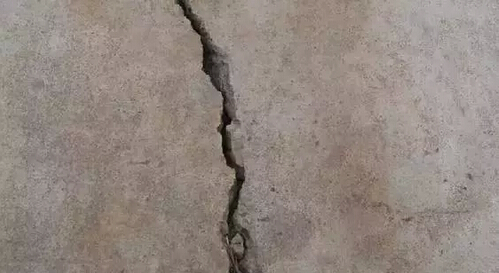
Common Problems
(1) The water cement ratio is too large, resulting in pores and cracks on the surface;
(2) Excessive amount of cement, shrinkage crack;
(3) Poor or untimely maintenance, surface dehydration, dry shrinkage and cracks;
(4) The slump is too large, the pouring is too high and too thick, the plain slurry floats up, and the surface is cracked;
(5) Early formwork removal and improper force pry the concrete;
(6) The concrete surface is not plastered and pressed tightly;
(7) The protective layer of reinforcement is too thin and cracks along the reinforcement;
(8) Concrete cracking due to lack of stirrups and temperature bars;
(9) Mass concrete has no measures to reduce the internal and external temperature difference;
(10) There is no reinforcing bar at the application concentration such as opening corner.
